Custom Industrial Lenses
With our years of experience in the research and development of custom industrial lenses, MT can produce high resolution optical microscopy solutions for a variety of applications.
According to the requests of the equipment, such as working distance, the camera sensor you use, the required field of view of the object, how small of the object you need to check. We decide how to design the industrial lenses for you.
From industrial inspection, medical imaging, to robotics and intelligent manufacturing, customized industrial lenses are indispensable to contemporary industrial processes. Let the customized lenses to improve reliability and accuracy of the whole system.
- Improve detection accuracy and efficiency
- Lower production cost
- Improve the intelligent level of production lines
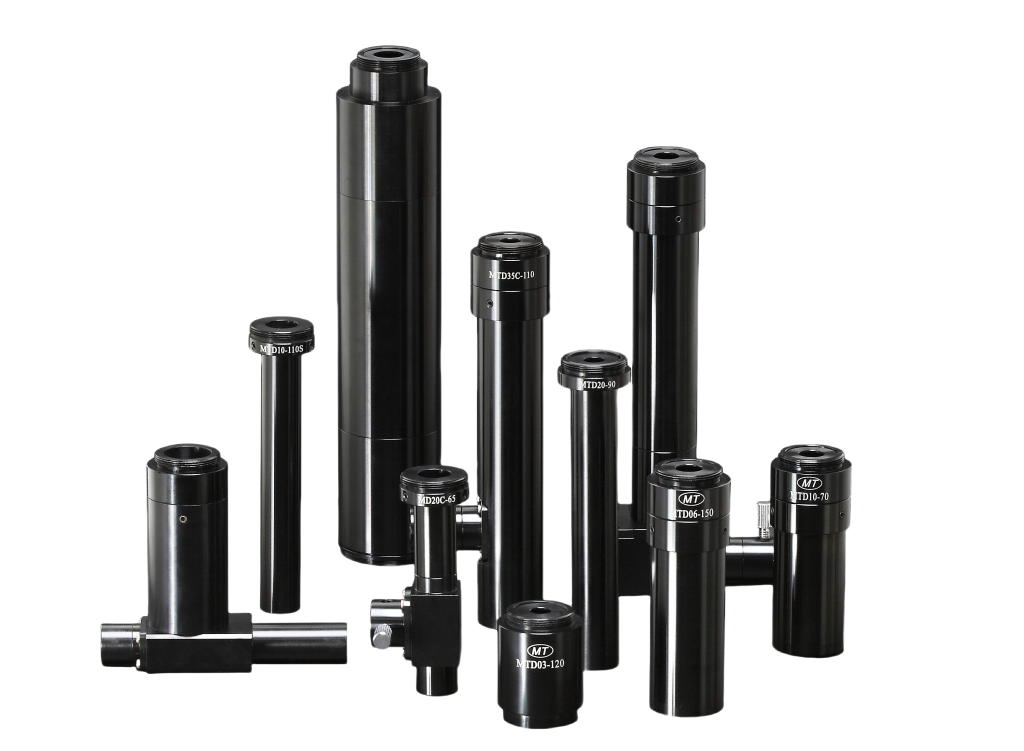
Ready-to-use Custom industrial lenses
Notice:
- Before the customization, please check the lenses we have designed for our customers. Maybe you can find the right one to save time and design cost.
- There are more special customized lenses are not in the list of the catalogues. Please contact us for details.

MTD Tool-setting, double Mag. Lenses
- tool-setting inclined lenses with eyepieces, designed for precision tool-setting on equipment;
- double magnification to observe the same object with one lenses;
- Various fixed optical mag. from 0.5X to 3.0X, with working distance from 60mm to 200mm,
- ring or coaxial illumination;
- 90 degree right angle tube, or 180 degree tube
Catalogue
download:

MTDP MTDP infinity farness fixed Mag. lenses
- Fixed Magnification main body from 0.7X to 8.0X ;
- 0.3X, 0.5X, 0.75X, 1.5X, 2X auxiliary objectives to reduce or increase magnification and working distance;
- can combine infinity-corrected objectives for higher resolution and magnification, available to match 10X metallographic objectives from Nikon, Olympus, Mitutoyo;
- ring or coaxial illumination.
Catalogue
download:

MTDY Telecentric Lenses for
Industrial Precision Measurement
- Key Features:
- Dual Telecentric Design: Ensures consistent magnification and size measurements, unaffected by changes in object distance.
- Low Distortion: Minimizes image distortion (as low as 0.01%).
- High Resolution: Achieves up to 8.4μm resolution.
- Wide Compatibility: Supports 1/3″, 1/2″, and 2/3″ cameras.
- Specifications:
- Magnification: Ranges from 0.5X to 4X.
- Working Distance: Available in 65mm and 115mm options.
- Field of View: Varies by model and sensor type.
- Applications:
- Precision PCB Inspection.
- Semiconductor Measurement.
- Machine Vision and Industrial Measurements.
Catalogue
download:
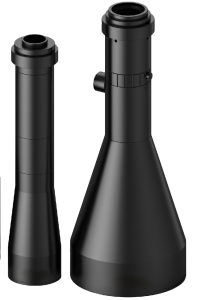
MTDYY Dual Telecentric Lens Series
- Key Features:
- Precision Measurement: Dual telecentric design eliminates measurement errors caused by depth of field changes, making it ideal for precise linear dimension measurements.
- Low Distortion: Distortion rates as low as 0.01%, ensuring accurate imaging.
- High Resolution: Up to 8.4μm resolution, suitable for fine structural inspections.
- A variety of magnification from 0.8X to 4.0X, with working distance from 65mm to 115mm;
- Wide Compatibility: Supports various camera formats (1/3″, 1/2″, 2/3″).
- Applications:
- Precision PCB Inspection.
- Semiconductor Measurement.
- Machine Vision and Industrial Measurements.
Fast Selection Guide
When selecting the right optical system or microscope lens for your needs, there are several important factors to consider. Here’s a step-by-step guide to help you make the best decision, as well as the information we need from you if customization is required.
1. Define Your Application Requirements
Start by understanding your specific application. Consider the following factors:
- Application Type: (e.g., semiconductor inspection, PCB inspection, quality control, etc.)
- Object Size & Shape: Are you inspecting small components, like semiconductors, or larger items like circuit boards?
- Accuracy Requirements: Do you need high precision for measurements? Choose a system that can provide high resolution and minimal distortion.
2. Choose the Correct Magnification
Different magnification levels are suitable for different inspection tasks. We offer a wide range of magnification levels to meet various needs:
| Magnification | Typical Application |
|---|---|
| 0.3X – 1.5X | Inspection of larger objects or wide fields of view |
| 2X – 4X | Detailed inspection of components like semiconductors or PCBs |
| 5X and above | Precision measurements and micro-level inspection |
3. Working Distance
The working distance (WD) refers to the space between the lens and the object being viewed. This is especially important in applications where objects are too large or too small to fit comfortably under a standard microscope.
- Short working distance (65mm to 80mm): Ideal for high magnification and smaller objects.
- Medium working distance (100mm to 150mm): Suitable for medium-sized objects or where space under the lens is restricted.
- Long working distance (greater than 150mm): Allows for larger objects or when space under the lens is ample.
4. Field of View
Field of view (FOV) is the visible area through the lens. A larger FOV is necessary when inspecting large or complex objects. It’s important to balance the FOV with magnification to ensure both clarity and coverage.
| Magnification | Field of View | Example Use |
|---|---|---|
| 0.3X | 12mm x 16mm | Large area inspection |
| 1X | 4.8mm x 3.6mm | Detailed component inspection |
| 2X and above | 1.6mm x 1.2mm | Precision measurements |
5. Distortion & Resolution
For high-precision applications, minimizing distortion is key. Our lenses, especially in the MTDY and MTDYY series, offer high performance with very low distortion and excellent resolution.
- MTDY Series (Object Space Telecentric): Near-zero distortion, ideal for industrial measurements.
- MTDYY Series (Dual Telecentric): Perfect for precise, error-free linear measurement, with ultra-low distortion.
6. Lighting Requirements
Proper lighting is essential for achieving the best results. We offer various light sources that are compatible with our systems, including coaxial illumination and ring lights. Depending on your specific needs, you can opt for standard or custom lighting solutions.
Custom lenses Application Cases
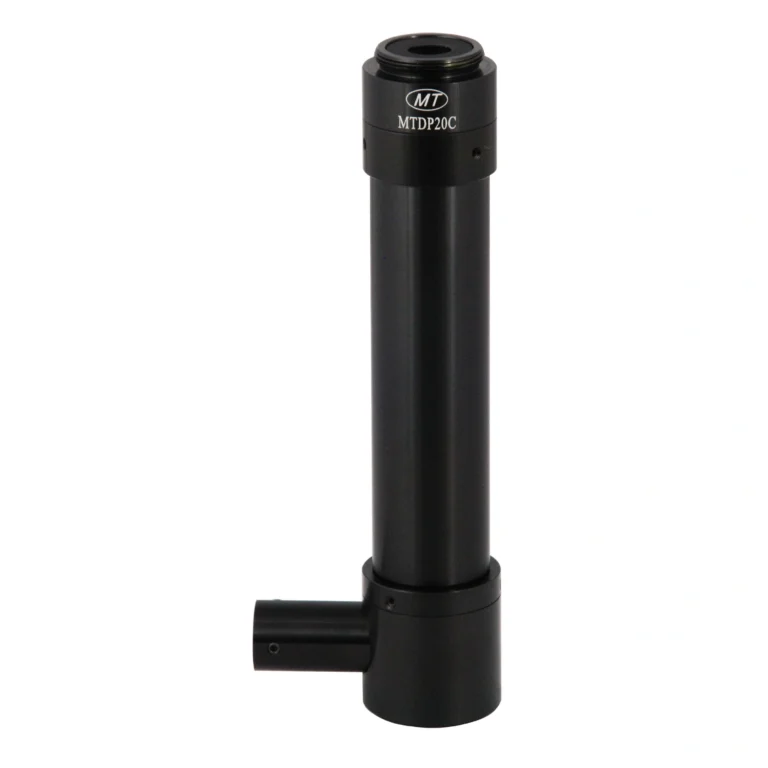

We’ve been working with a leading global manufacturer of urinalysis analyzers, providing them with custom lenses that significantly enhance the performance of their devices. Our MTDP infinity-corrected monocular microscope, combined with high-powered metallurgical objectives (such as 20X or 40X from Nikon or Olympus), delivers magnifications exceeding 2000X. This enables high-precision imaging of urine samples without the bulk of traditional biological microscopes.
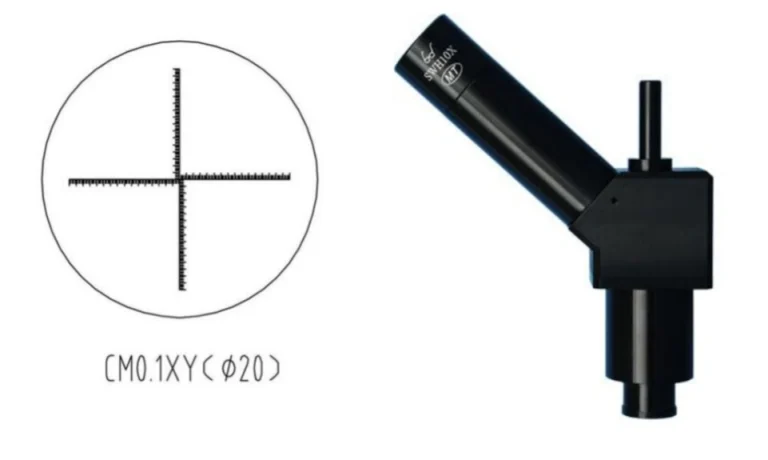
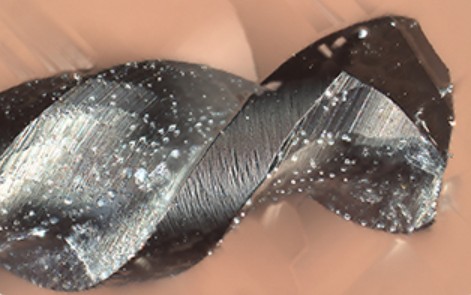
Used as optical coordinate positioning instruments on milling machines, CNC milling machines, machining centers, etc., have high-precision alignment or measurement functions. Machine tool display microscopes use the displayed numbers to correspond with the arc and other aspects of the object being measured, thereby quickly judging the needs of processing online. A variety of scale line micrometer target surface rulers can meet diverse needs.


To meet the needs of customers to observe a large field of view and local high resolution, we specially designed two magnifications in one lens. At the same working distance, both annular and coaxial light sources can be supported for electronic devices, semiconductor inspection, tin spot inspection, printed sticker inspection, chip and liquid crystal display inspection, and similar purposes.
Custom lens design services
How to Choose the Right Customized Industrial Lens for Your Application
Selecting the right industrial lens is crucial to achieving optimal performance in machine vision systems, manufacturing quality control, and many other precision tasks. Customized lenses are tailored to meet specific needs, offering enhanced performance, reliability, and cost-effectiveness. In this guide, we’ll help you understand how to choose the best lens and the key factors you should consider when customizing it for your specific application.
1. Why Choose Customized Industrial Lenses?
- What is Lens Customization?
Customized lenses are designed to meet specific optical requirements, ensuring they fit perfectly with your unique application. These lenses are often needed in specialized fields like machine vision, optical inspection, or product measurement in manufacturing.
Claim 1: Customized lenses provide superior image quality and precision, reducing errors and improving operational efficiency in industrial applications. - Key Benefits of Customization
- Enhanced Performance: Tailored lenses provide clarity, reduce distortion, and improve focus, which is essential for accurate inspections and measurements.
- Design Flexibility: Lenses can be customized to suit various environmental conditions, such as temperature fluctuations, vibrations, and other industrial challenges.
- Long-Term Cost Savings: By getting the right lens from the start, you can save costs related to equipment errors, downtime, and replacing inadequate lenses.
2. Key Considerations When Customizing Your Lens
Field of View (FOV)
- How Does Object Size Affect FOV?
Choosing the right FOV depends largely on the object size. For instance, large objects like machinery parts require a wider angle lens, while smaller items like circuit boards or microchips may need a narrower FOV to capture finer details.- Visual Angle: Larger objects require a wider FOV to fully capture them in the frame, while smaller objects need a focused lens.
- Distance: The working distance between the camera and the object also impacts the FOV. Objects closer to the lens require a larger FOV, whereas distant objects may need a more focused lens for clarity.
- Application Needs: Depending on your inspection process, you may need a specific FOV to ensure that all details of the object are clearly visible without distortion.
Camera Sensor Size
- Impact of Sensor Size on Lens Selection
The camera sensor size is a critical factor that affects both the FOV and lens choice. For example, using a lens designed for a smaller sensor on a larger sensor may result in vignetting or image distortion.- Field of View: Smaller sensors require shorter focal lengths to achieve the same FOV as larger sensors. For instance, a 50mm lens on a full-frame sensor will have a different FOV than on an APS-C sensor.
- Depth of Field: Larger sensors tend to provide a shallower depth of field, allowing for more precise focus on specific parts of the object.
- Image Circle: Ensure the lens has an image circle large enough to cover the sensor size to avoid issues like vignetting.
3. Key Performance Requirements for Industrial Lenses
- Magnification
Magnification is crucial for enlarging objects that need detailed inspection, such as small components or parts with intricate features. It’s influenced by object size and working distance. - Focal Length
Focal length plays a key role in determining the magnification and field of view. A longer focal length will provide higher magnification but results in a narrower FOV, making it suitable for inspecting smaller objects from a distance. - Depth of Field
Depth of field (DoF) determines how much of the object is in focus. A larger aperture results in a shallower DoF, which is ideal for close-up inspections where focus on a small part of the object is critical. - Resolution
High resolution is essential to capture fine details. For tasks like quality control or measurement, ensuring high resolution is a must for precise data collection. - Distortion
Minimizing distortion is vital for accurate measurements and assessments, particularly in machine vision applications where precision is critical. - Durability and Environmental Resistance
Customized industrial lenses must be built to withstand harsh environments like high vibration, temperature fluctuations, and exposure to dust, moisture, or chemicals. Lenses that are resistant to these elements ensure longevity and reduce maintenance costs.
4. Step-by-Step Process for Customizing Your Lens
Step 1: Define Your Application Requirements
- Identify the specific requirements of your application, such as magnification, resolution, FOV, and working distance. For example, are you inspecting tiny components or large machinery? Understanding these details helps ensure the lens is perfectly suited to your needs.
Step 2: Choose the Right Optical Specifications
- Based on your requirements, decide on key specifications like focal length, aperture size, lens material, and lens mount type (e.g., C-mount, M28). Customizing these factors will enhance the lens’ performance for your specific use.
Step 3: Provide Essential Information for Customization
- To help the manufacturer deliver a fully optimized lens, provide detailed specifications such as:
- Object size and distance from the lens
- Camera sensor size and type
- Required magnification and resolution
- Mounting options
- Environmental conditions (e.g., temperature, vibration)
Step 4: Testing and Quality Assurance
- Once your customized lens is ready, rigorous testing ensures that it meets all performance and durability requirements. This step guarantees the lens will perform reliably in your industrial environment.
Conclusion
Choosing the right customized industrial lens is essential for ensuring the success of your application, whether it’s for machine vision, quality inspection, or automated measurement. By considering key factors such as FOV, sensor compatibility, and environmental resistance, you can ensure optimal performance. Partnering with a trusted manufacturer will ensure that all your specifications are met, delivering a high-quality, reliable optical solution.
discuss your requirements with our expert team. We’re ready to turn your vision into reality.




